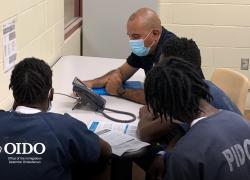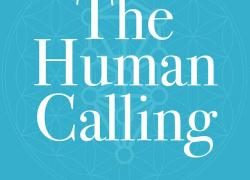The Benefits of Shopping Small This Holiday Season
Motivated by the potential for growth, small businesses across the country are taking advantage of this movement with more enthusiasm year after year, given strong consumer response. GS1 US, an information standards organization that helps small brands identify their products for commerce, recently spoke with small business owners who have run successful Small Business Saturday campaigns. They discussed three big benefits to buying from small businesses this holiday season.
Unique Products
Consumers are hungry for a wide variety of unique products, which provides prime motivation for shoppers to support small businesses.
"People shop small because it makes them feel good. It allows people to discover interesting products, and feel like they are helping a real person, as opposed to a big corporation," says Andrew Jacobs, CEO of JAM Paper and Envelope, an e-commerce paper company.
According to a study by the NFIB and American Express last year, nearly two-thirds of online shoppers (65 percent) are likely to seek out small, independently-owned retailers. This helps unique products from small brands compete right alongside products from larger, well-known brands.
"It's so important for small businesses to be recognized in order to compete with big businesses," says Lisa Burginger, founder of Qubits Toy, Inc., a company that makes colorful building sets for kids. "For our company, it's our busiest time of the year."
Community Support
For many consumers, shopping small is driven by the desire to support their local communities. When consumers spend $100 at a local business, roughly $68 stays in their local economy, according to a recent Civics Economy study. The local impact, which helps benefit food, service and civic organizations within the community, could be 50 percent larger than a similar purchase from a regional or national retailer.
"I believe people want to support their communities," says Allison White, founder of Scout Cart, a unique personal utility cart company. "They often know the owners of local small businesses and these small businesses often provide employment opportunities for the young adults in our families."
True Connections
Small businesses can use the extra consumer attention to nurture brand loyalty beyond just one day. According to the 2018 Small Business Saturday Consumer Insights Survey, 96 percent of consumers who reported shopping on Small Business Saturday say the day makes them want to shop "small" all year long, not just during the holiday season.
"Small businesses can give you special services, discounts, and one-to-one customer service that big businesses can't always offer," says Burginger.
Increasingly, shopping is about a shared experience - the small businesses that create memorable moments for consumers will likely experience growth.
"The next generation is looking for more than just a product, they want an experience," says Travis Wayne, product manager, TEKLYNX, a barcode software company that is certified as a GS1 US Solution Partner, a program that helps small businesses find qualified partners to help them reach more consumers.
"When you walk into a hardware store, for example, or if you shop online, it's more about personalizing that experience and ensuring that the consumers get what they need. Some businesses teach instructional courses on a product, or supply some kind of educational information. It's about going above and beyond consumer expectations with the hopes of increasing the sale and maintaining a customer for life."
Taking advantage of Small Business Saturday is ultimately just one way small brands are setting themselves up for growth. Beyond the holiday season, businesses of all sizes need to think strategically to succeed in a competitive retail landscape. Visit www.gs1us.org/small-business to access research from GS1 US on the ambitions and challenges of small businesses, watch videos featuring entrepreneurs, and learn more about their growth journeys.






